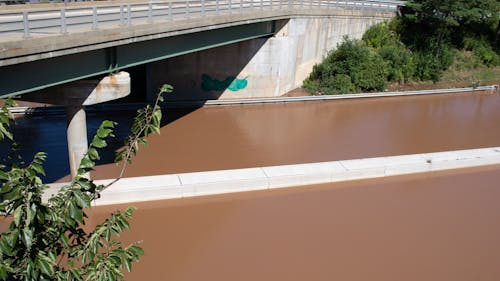Climate change increased Tropical Storm Ida's severity, Rutgers experts say

Tropical Storm Ida has become one of the deadliest storms to ever hit New Jersey, killing 30 people in the state, according to NJ Advance Media. Rutgers professors said climate change contributed to the storm’s severity and may continue to with future storms.
Alan Robock, a professor in the Department of Environmental Sciences, said rising global temperatures increased the severity of Ida, which was categorized as a hurricane when it first hit the U.S., by warming ocean waters.
“Global warming made Ida a little stronger, because the ocean that fueled it was warmer, and there was more coastal flooding, because sea level is a little higher,” he said.
Hurricanes form when warm air from ocean water rises and cools, creating a circular motion, said Travis Miles, an assistant professor in the Department of Marine and Coastal Sciences. This circular movement of air and moisture moves across the globe due to the planet’s rotation, creating hurricanes.
Miles said favorable conditions for hurricanes include warm ocean temperatures, high amounts of moisture in the air and lack of wind shear, or change in the wind’s speed or direction over short distances.
“For Ida, we had a very favorable shear environment, very favorable atmospheric environment … and the ocean temperatures in the Gulf of Mexico were just very, very warm,” he said.
Miles said warmer atmospheric temperatures allow for more moisture to exist in the air and cause greater precipitation during a storm. He said increased precipitation year to year from powerful storms is a major concern.
“You have Hurricane Harvey and Hurricane Florence that dumped a lot of water on Texas and North Carolina over the last few years, and I think we have to really pay attention to those types of impacts,” Miles said.
In New Jersey, greater precipitation from storms causes a rise in sea levels as well as subsidence, or the sinking of land, he said.
Over the last decade, there has been an increase in storm severity, with many storms reaching Category 4 and Category 5 classification, Miles said. At its peak when considered a hurricane, Ida was categorized as a Category 4 storm.
He said there is still debate on whether climate change has resulted in more frequent storms. Though, Robock said future storms will continue to be stronger as temperatures increase from global warming.
Even without any change in storm severity or frequency, Miles said higher sea levels inevitably allow for increased flooding of coastal areas during storms. He said this is especially concerning, given that New Jersey’s coastline plays host to numerous populated areas and contributes to the state’s industry and tourism.
“To plan for the upcoming warming that will happen no matter what, we need to build more resilient infrastructure,” Robock said.
He said it is necessary to switch the economy’s source of energy to renewable sources. Such a transition could be sped up by enacting a fee on carbon emissions, which would reduce further global warming, he said.
Miles said storms like Tropical Storm Ida have caused individuals to understand climate change not as a hypothetical situation but as something that directly impacts their community.
“Storms like Ida and (Hurricane) Sandy provide an opportunity to really have those on-the-ground discussions about how it’s going to affect particular communities,” he said. “They basically force us to have those conversations because people are being impacted. It’s no longer some hypothetical thing that could happen, it’s things that are happening in our communities.”



